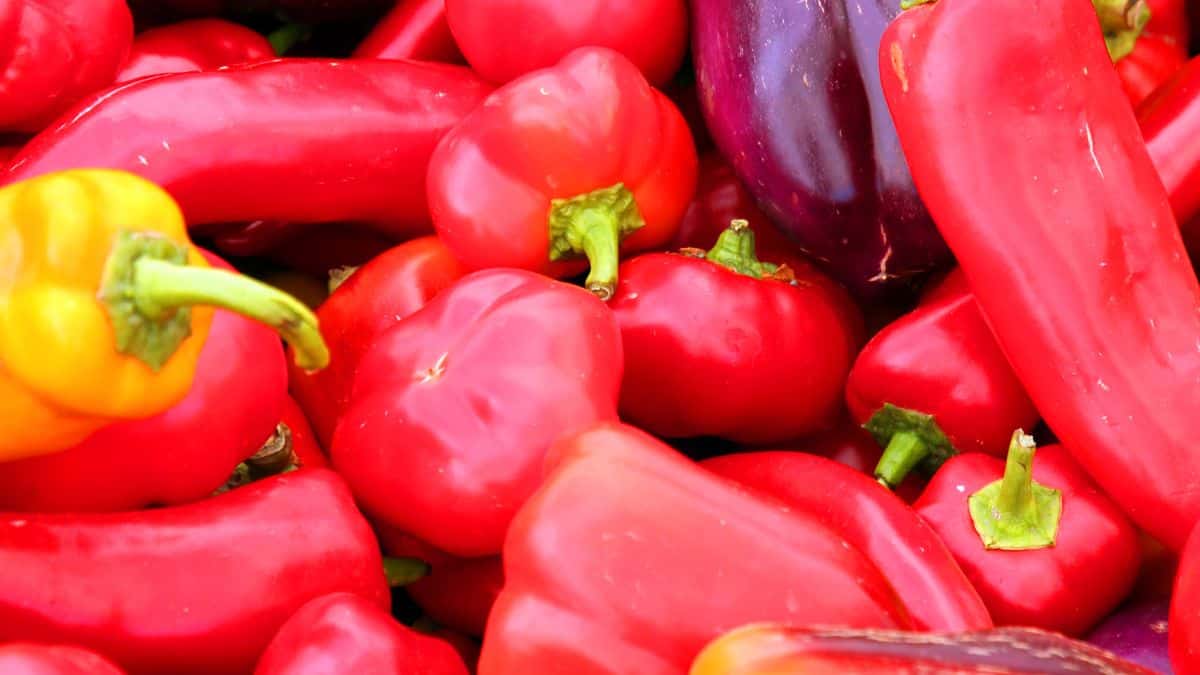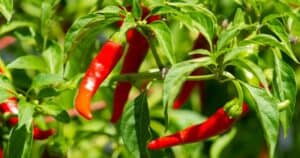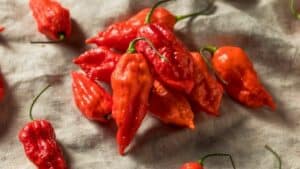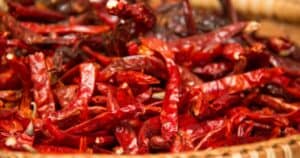If you’ve heard the phrase “peck of peppers” before but weren’t quite sure what it meant, you’re not alone. Peck is an old-fashioned unit of measurement used for various fruits, vegetables, and dry goods. But how many peppers actually make up one of these so-called “pecks”?
The answer is typically 30-35 peppers per peck on average. However, the exact amount can vary based on the type and size of pepper.
For example, you’ll get fewer larger bell peppers per peck compared to smaller hot chile peppers. Pickled peppers will fit more per peck than fresh raw peppers as well. Factors like soil quality, sunlight, and spacing also affect the ultimate size and number of peppers grown.
While not as universally used today, pecks are still a handy reference point for home gardeners and shoppers at farmers markets. Beyond just peppers, a peck can be used to measure tomatoes, carrots, cucumbers, and more.
So next time you stumble upon a “peck of peppers” for sale or in a recipe, know that you’re looking at around 30-35 of the spicy fruits! Read on to learn more about pepper peck quantities, growing conditions, health benefits, and other peck-related trivia.
What is a Peck, Anyway?
A peck is an imperial and U.S. customary unit of dry volume, equivalent to 2 dry gallons or 8 dry quarts. It was commonly used to measure out fruits, vegetables, and dry goods when shopping at the market.
Although not as widely used today, you may still come across pecks at some farm stands or traditional grocers. It’s a handy reference for home gardeners as well.
How Many Peppers Fit in a Peck?
So back to our central question—how many peppers are in a peck? There is no single answer, since peppers come in diverse shapes and sizes. But on average, expect 30-35 peppers per peck.
For a visual, that’s enough to fill a small basket or reusable shopping bag. Let’s break it down further by pepper variety.
Quantity of Bell Peppers In a Peck
Bell peppers are the familiar, blocky sweet peppers perfect for stuffing, snacking, and cooking. Due to their large size, you’ll get fewer bells per peck compared to other types.
The table below shows how many different-sized bell peppers fit in a peck.
| Size of Bell Pepper | Quantity In a Peck |
| Extra large bell peppers | 10-12 |
| Large bell peppers | 13-14 |
| Medium sized bell peppers | 16-17 |
| Small sized bell peppers | 21-24 |
Pickled Peppers
Since pickled peppers are smaller and softer than fresh bell peppers, you can fit more in a peck. Expect approximately 45-50 pickled peppers per peck.
Small Hot Peppers
Tiny but fiery hot chile peppers, like Thai and serrano peppers, are extra small. You’ll get about 55-60 small hot peppers per peck.
Assorted Sweet Peppers
If we’re talking a mix of mini sweet peppers, shishito peppers, banana peppers, and other petite varieties, plan on 40-50 per peck on average.
So in summary, 30-35 peppers per peck is a safe estimate across all types. The exact amount depends on individual size and shape.
What Else is Measured in Pecks?
While we’ve focused on peppers, it’s interesting to note the diverse fruits, veggies, and goods that were traditionally measured in pecks.
The table below shows the various types of food and the amount that can be contained in a peck.
| Commodity | Net weight |
| Tomatoes | 12-15 |
| Oysters | 25 |
| Potatoes | 12-15 |
| Cucumber | 12-13 |
| Eggplant | 8-9 |
| Beans | 8-9 |
| Broccoli | 6 |
| Carrots | 12 |
| Okra | 6 |
| Squash | 10 |
| Turnips | 12-15 |
| Asparagus | 11 |
| Peas | 7-8 |
The above table demonstrates that the peck system unit of measurement is not limited to peppers.
Fun Fact: In 1813, John Harris published the first version of the popular ‘peck of peppers’ tongue twister in Peter Piper’s practical principles of plain and perfect pronunciation!
How Growing Conditions Affect Pepper Size
To get the maximum number of peppers from your garden or farm, follow best practices to grow healthy, robust plants. Here are some key factors:
Soil pH
Peppers thrive in slightly acidic soil with a pH of 6.0-6.5. Too alkaline or acidic will cause poorer fruit development.
Sunlight
Peppers need at least 6 hours of direct sun daily for the best growth. Insufficient sunlight causes weak, sparse foliage.
Spacing
Allow 18-24 inches between each plant. Crowding causes stunted plants that produce smaller yields.
Water
Consistent moisture is important, especially during flowering and fruiting. Drought stress reduces fruit size.
With optimal soil, sunlight, spacing, and water, your peppers will reach their full genetic potential in terms of size, maximizing the quantity you can get per peck.
The Health Benefits of Eating Peppers
Beyond peck measurements, it’s important to highlight why you should be eating more of these nutritious fruits in the first place. Here are some of the top benefits:
- Excellent source of vitamin C and A for immunity and eyesight.
- Contain vitamin B6 for energy production and mood regulation.
- Anti-inflammatory and anticancer properties from compounds like capsaicin.
- Metabolism-boosting effects that increase calorie burn.
- Helps clear nasal congestion and fight colds and flu.
Research also shows that people who regularly consume peppers have reduced risk of cardiovascular disease, diabetes, and neurodegenerative diseases like Alzheimer’s.
So don’t be afraid to go through several pecks per year and reap these rewards! Moderation is still key, however.
Peck-Related Questions
If you’re still curious about pecks, here are answers to a few common questions:
How many pecks are in a bushel?
A bushel contains 4 pecks. So 1 bushel = 4 pecks.
What size pot should I use to grow peppers?
A 5-gallon bucket with drainage holes is ideal. This gives their roots ample room.
How long until peppers are ready to pick?
Most peppers mature within 60-90 days after transplanting seedlings. Hot peppers can take up to 150 days.
Whether you’re gardening, cooking, or buying produce, keep the peck in mind as a fun historical reference. Around 30-35 peppers sounds about peck-perfect!





